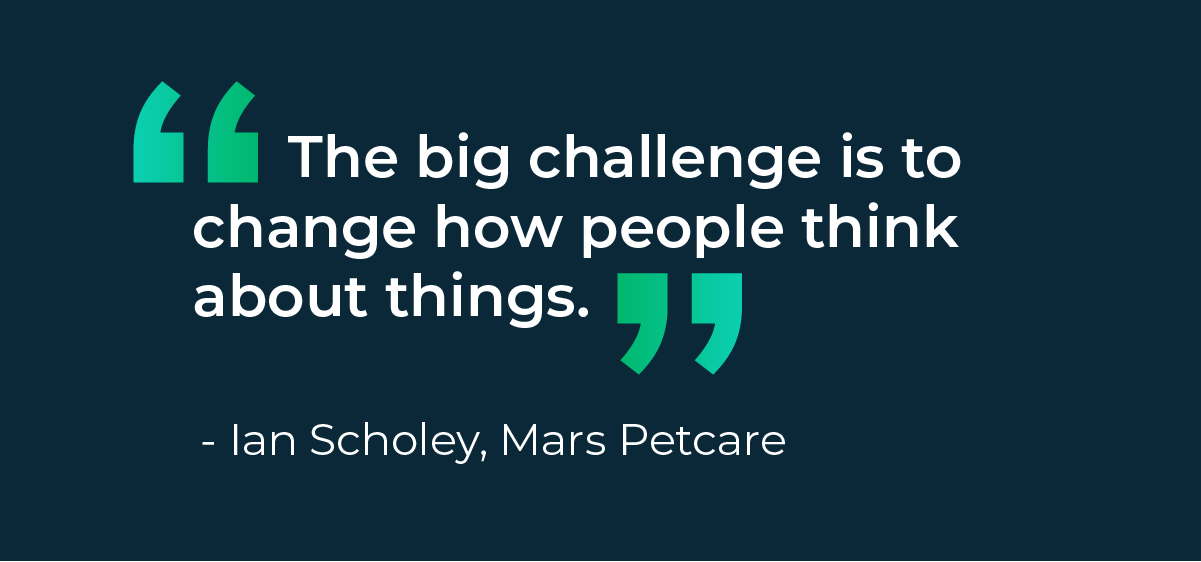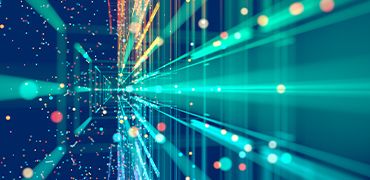Strategies to Help You Launch an Organizational Data Transformation

Most organizations today generate a surplus of data on everything from revenue figures to employee satisfaction trends. And recent global trends, such as supply-chain difficulties and the fast-changing consumer demands spurred by the COVID-19 pandemic, have demonstrated the importance of using that data to make business decisions and pivot when necessary.
Yet for many companies, data-driven strategy remains elusive. Simply generating or having access to large sets of information means little in a complex and fast-moving business environment.
To thrive and compete in the marketplace of the future, companies need to be able to harness that data and power their decision-making with complex analysis. Currently, 68% of the data available to global enterprises is going unused. For most organizations, improving on that figure will require enterprise data transformation.
So, what is a data transformation?
Enterprise Data Transformation: Definition and Benefits
While the phrase “data transformation” is used in several different contexts, within organizational development it refers to the process of creating a data-driven culture throughout and across the organization.

Ian Scholey, Global Analytics Director at Mars Petcare, explained at a recent Emeritus digital event that a successful enterprise data transformation fundamentally changes a company’s operations and decision-making processes. Further, it creates a shared framework where different organizational functions can collaborate using data.
Data transformation’s top benefits include:
- Revenue growth: A 2022 Alation survey found that 90% of organizations with top-tier data cultures met or exceeded their revenue goals over the past year.
- Cost savings: A comprehensive organizational data transformation can help companies identify redundancies and shift resources away from underperforming areas.
- Data-driven decision-making: Capturing and analyzing critical customer data can help companies identify new opportunities and innovate their products and services.
- Refocusing employee efforts: When teams effectively manage and automate data processes using top-notch tools, they can shift resources previously spent on manual data management to higher-value work.
- Meeting consumer demand: When companies can parse data to understand consumers’ changing needs and responses to existing products and services, they can more quickly pivot and adapt to improve satisfaction and loyalty.
Data Transformation Challenges
Despite the powerful positive results that data-focused strategic transformations can bring, implementing them is not always straightforward. According to the Harvard Business Review, only 26.5% of organizations have successfully established a data-driven culture.
Common obstacles to data transformation include the following.
1. Cultural obstacles
In the Harvard Business Review survey, 91.9% of executives said cultural obstacles were their biggest barriers to building a data-driven operation. Resistance to data transformation can come from every level of the company, including senior leadership. It can be compounded by fears of job impacts or a general lack of understanding.
Transparency about the transformation’s goals, as well as clear communication about what changes will mean for individuals, can help reduce hesitancy.
2. Ineffective communication
The best data transformation strategy in the world will fail without effective communication skills. As Scholey explained in the webinar, “Substance is nothing without communication, and communication is nothing without substance.” Leaders must clearly convey the goals and reasoning behind data transformation efforts—and provide space for employees to raise questions and concerns.
Clearly conveying to employees the goals behind your planned data transformation is essential for building a data-driven culture.
3. Building out new leadership functions
For many organizations, data leadership is a new role. In the Harvard Business Review survey, only 40.2% of companies reported that their chief data analytics role was well-integrated. Often, companies build these functions amid broader transformation efforts. At Mars Petcare, Scholey grew the data team from two to 250 over just a few years, all while developing the function from scratch.
While this growth is positive, it requires a concerted effort to build synergies within the company. Leadership teams should include data leaders in key meetings and conversations, while data leaders should make an effort to develop relationships across departments and functions.
4. Managing growing data sets
The volume of data that most companies generate is multiplying quickly. And this data typically comes from a wide range of sources in numerous formats. Data teams face the challenge of gathering, parsing, and protecting data, all while identifying and conveying its relevance. Ongoing investment in data teams and tools will be necessary to manage the influx of data.
5. Compliance and ethics
Many companies generate large amounts of potentially sensitive consumer data. Owning this data brings with it complex compliance requirements, many of which differ by country and region. Additionally, organizations have an ethical obligation to steward their customers’ data and may face severe reputational repercussions should they fail to do so.
Data Transformation Example: Mars Petcare
As Scholey noted, Mars Petcare offers a valuable data transformation example for other organizations to follow. Over just a few years, the company successfully grew a data function from scratch, and it now spans the organization’s four key verticals: mainstream pet food, veterinary pet food, veterinary medicine products, and direct-to-consumer products (like pet DNA kits).
In addition to streamlining business operations and driving strategic decisions, the organization has used its new data capabilities in its product design. For example, the company can now integrate large, previously disparate data sets from tens of thousands of veterinarians around the world to identify pet breed, age, and size-specific trends to target their pet food and veterinary products.
Data Transformation Strategies: Getting Started
According to Scholey, several strategies were central to the transformation’s success, including the following.
1. Embed the data team within the organization
Scholey said a data team’s technical abilities are irrelevant if it doesn’t fully grasp the business’ goals and challenges and work effectively across functions.
“It’s about understanding how the business operates and coming in with solutions that fit in with that,” he said. “You need to put in the effort and the hours of engagement to understand and be visible and relevant.”
2. Communicate the value of data
Many businesses have long operated without a focused data initiative, and inertia can be a problem.
“The big challenge is to change how people think about things,” Scholey said.
Working with the organization’s internal communications team to spread the word about the role of data–not just to practitioners but also the rest of the workforce–can be an effective strategy.
3. Create a multi-skilled, aligned data team
Even within a data team, Scholey warns, it’s easy for siloes to form. The most effective teams are comprised of members who work together and learn from one another’s specific expertise.
At Mars Petcare, for instance, the data team meets every two weeks for a presentation on a specific technical topic to allow team members to better understand their colleagues’ work. In addition to technical skills, it’s essential to develop soft skills like communication and emotional intelligence to support the organization’s transformation.
4. Make time for upskilling
Mars Petcare follows what Scholey calls the 70-20-10 model. Ideally, employee upskilling comes 70% from on-the-job learning, 20% from peer-supported learning (like mentorship or stretch projects), and 10% from self-directed learning, such as external employee training programs. Notably, this principle applies to both hard and soft skills.
5. Educate the rest of the organization
In addition to continually upskilling the data team, promoting data literacy across the broader company is important. Mars offers a program called Data Unleashed, which offers workshops and courses to help employees of all levels understand the basics and uses of data. This is also an essential tool for building buy-in.
Launching a Successful Data Transformation
A successful data transformation requires patience, clear strategy, and broad organizational commitment. Scholey urges data leaders to focus on building their connections to and across the business.
By communicating clearly with the rest of the leadership team—and delivering on promises—data leaders can position themselves for success. Ultimately, a data transformation focused on scalability and efficiency will reap significant rewards for the entire organization.
Build the Skills to Drive Data Transformation
Are you considering a data transformation or preparing to embark upon one? Our Data Academy solution offers a unique learning program designed to equip employees across all levels of the organization with a shared understanding of the value and applications of data.





